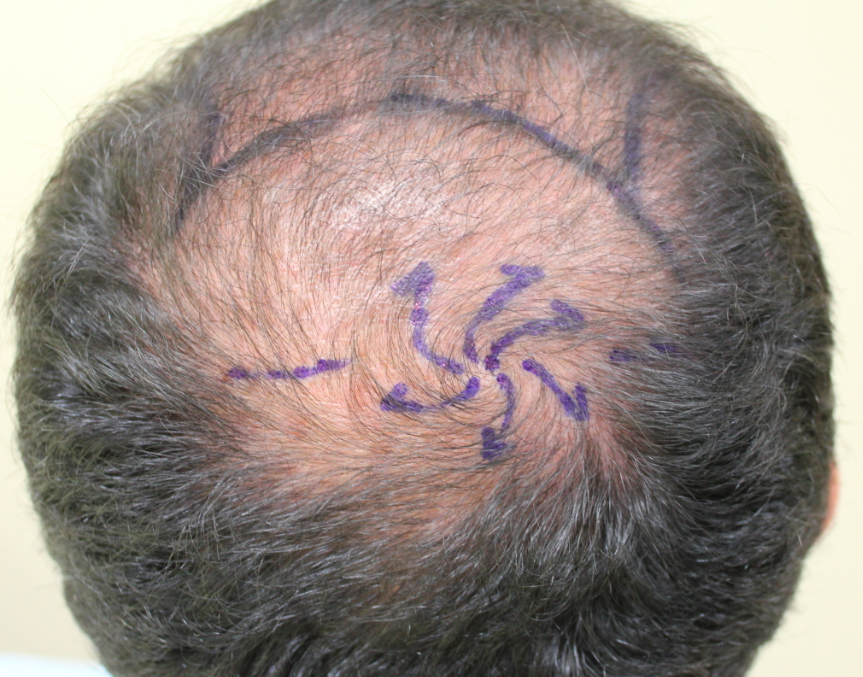The Hair Whorl: Importance in Transplanting the Crown
Transplanting the Crown
In the top of the scalp or crown, there is usually one or two areas where the hair changes direction from forward pointing to backward pointing. We call this area the “hair whorl.”
When I perform a hair transplant, I view the reconstruction of the hair whorl as being incredibly important in order to create a natural look. For most individuals, the hair whorl is positioned in a clockwise direction. About 2-5 % of the world has a double whorl.
Hair Whorl Research
Interestingly, recent research has focused on whether there is a relationship between the direction of the hair whorl and an individual’s tendency to be left handed or right handed. There is some thought that genes controlling handedness also might control our hair whorl. Research by Dr Klar showed that right-handed individuals are more likely to have a clockwise whorl pattern; for left- handed individuals there is a similar proportion of clockwise and counter-clockwise patterns. Specifically, 8.4 % of right-handed individuals have a counterclockwise whorl compared to 45 % of left handed people. Despite these interesting findings, the exact science of the relationship between hair whorl direction and ‘handedness’ remains a subject of controversy.
All in all, the hair whorl is something I pay particular attention to when transplanting the crown. The rotations and directions of the hair need to be followed carefully in order for a hair transplant to look natural.
REFERENCES OF INTEREST
Beaton AA and Mellor G. Direction of hair whole and handedness.Laterality 2007; 12: 295-301
Klar, A.J.S., 2003. Human handedness and scalp hair-whorl direction develop from a common genetic mechanism. Genetics 165, 269–276
This blog has been filed into the following folders:
This article was written by Dr. Jeff Donovan, a Canadian and US board certified dermatologist specializing exclusively in hair loss.

